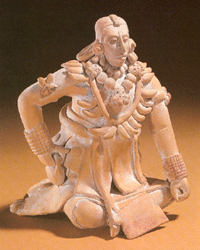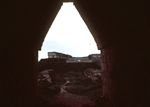Homework #1 Answer Questions (1-15) |
|
Study all the materials (A) on Opening Slide Show 1 and the Opening Slide Show 2; (B) on Pre-Columbian introductory notes; and on (C) the Maya Index. |
1. |
In the online textbook's Definition of the Humanities page (in Support Pages) there are 7 sub-headings (I - VII). Read the seven items. (A) Focus on #V and interpret it in your own words. (B) Do you thing #V helps or confuses what the (Latin American) humanities are? In other words, as this course is beginning, to what degree do your hopes for this course align with what is stated in #V? |
2. |
Study the complex image and comments in Opening Slide Show (1). Choose one of the images from #3 to #32 and write one short paragraph about the way in which this image illustrates aspects of Latin American humanities as we begin class this semester. |
3. |
Review the online textbook's definition of "diversity/multiculturalism" (#13) on the Key Terms and Themes page. Choose any one of the images in Opening Slide Show (2) from #37 to #71 (not #72) and write one short paragraph on how the image you choose illustrates the key term "diversity/multiculturalism" for you. |
4 |
After looking at the images in Opening Slide Show #1 and Opening Slide Show #2 (either the thumbnails or each of the 36 images), please state in general terms what you see as the main difference(s) between the two different sets of images. |
5. |
Answer questions A through F in Uxmal #12. |
6. |
Answer questions A through C in Tikal #10. |
7. |
Identify the significance of these two dates in Maya history: 353 CE and 1697. |
8. |
(A) During what period was Chichén Itzá a prominent Mayan site? (B) What semi-historical figure was prominently associated with Chichén Itzá? Just give the names: this semi-historical figure is known by several names depending on different pre-Columbian cultures he was involved in. |
9. |
(A) Identify the following image. (A) What are some of the principal symbolic features of such a warrior? (C)What is this figure holding in his right hand, and what might it be used for?
|
10. |
Identify the following Mayan image from Uxmal:
|
11. |
Describe the difference between a Chac-mool and Chaac. |
12. |
What is a "cenote" (cenote sagrado / sacred well)? What are its characteristics? What is sacred about it? Describe one of these from the Mayan images in the HUM2461 textbook. |
B. |
Read the Notes on the Popol Vuh and the assigned pages from the Popol Vuh (=> 9 Chapters Popol Vuh) |
13. |
From the Notes on the Popol Vuh, (A) tell what the book's title means; (B) when it was created; and (C) how it entered into the "Spanish-American" humanities? |
14. |
In the Popol Vuh, what beings are created in the first three creations narrated in the early chapters of the text assigned? |
15. |
Find one short passage anywhere in the first nine chapters in the Popol Vuh that you find most interesting. Briefly analyze this short paragraph and tell why you find it particularly interesting. |




